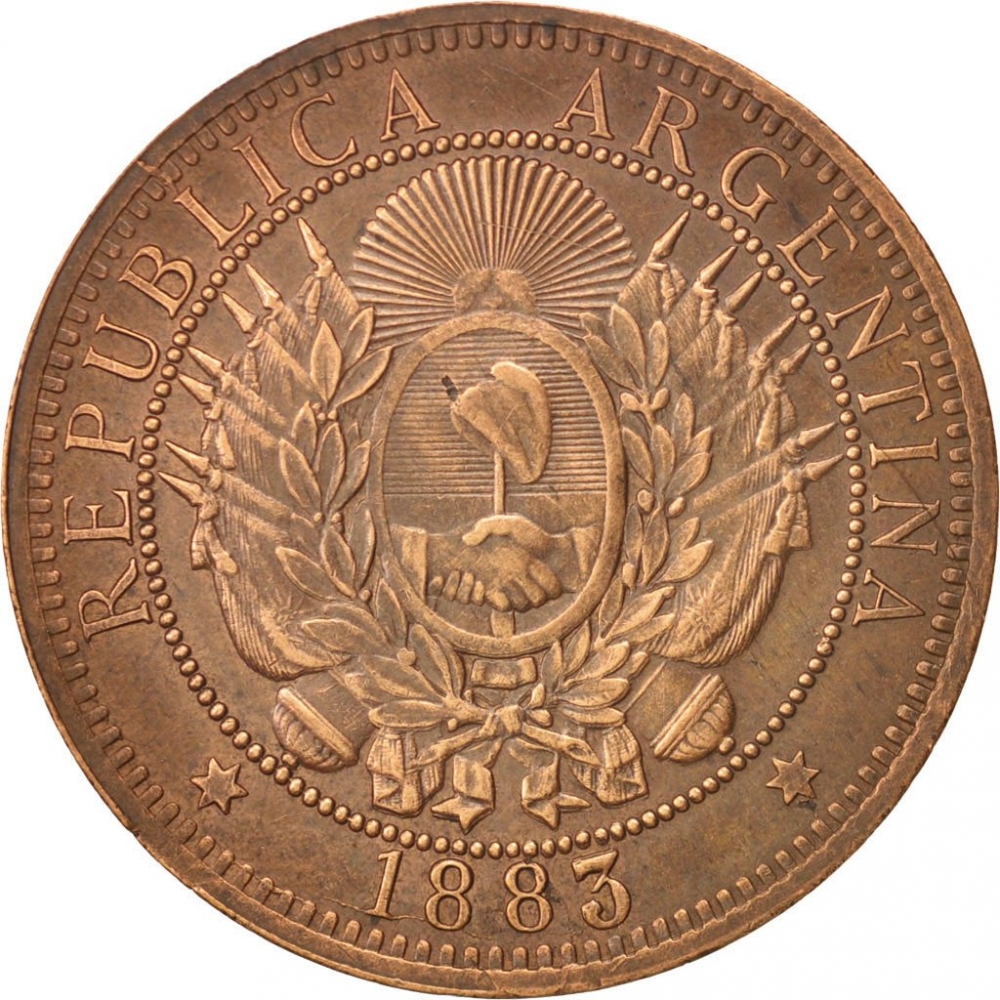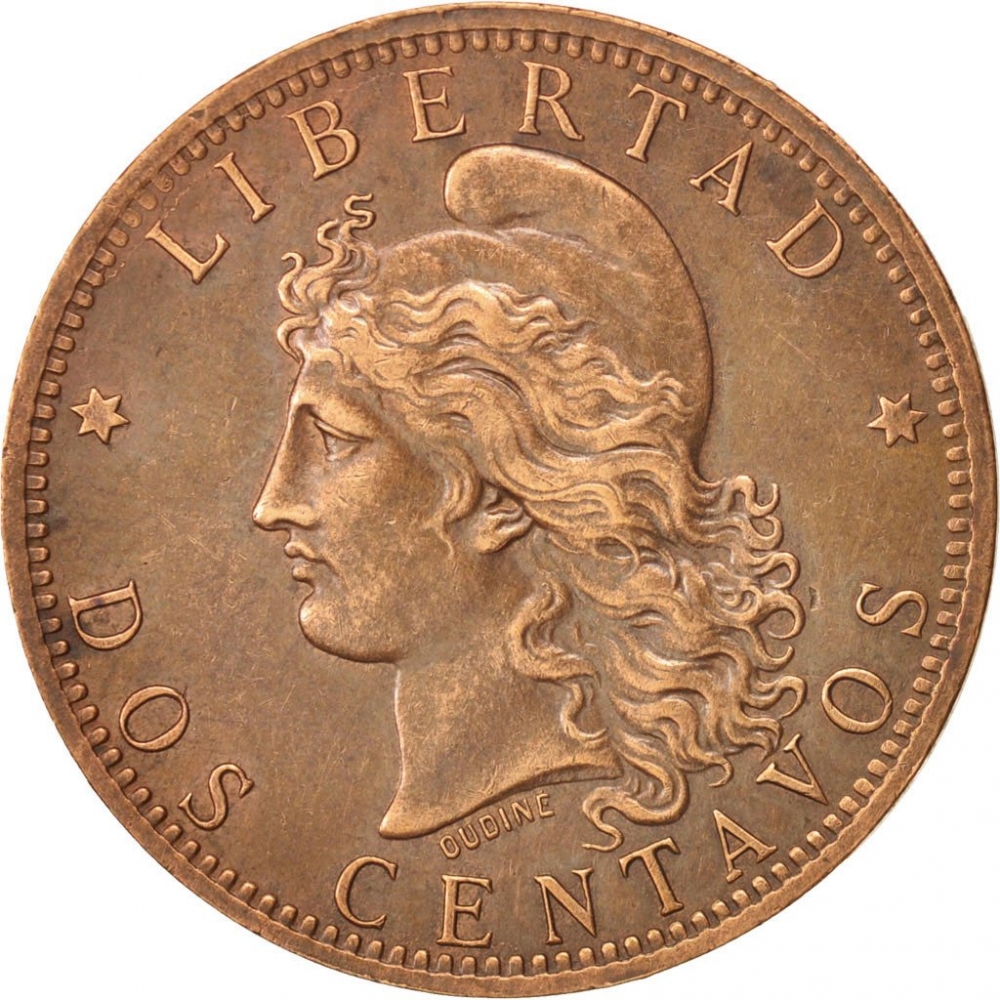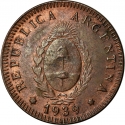You are about to finish your registration. Please check your mailbox (including spam folder). There should be a letter with a confirmation link. Check setting to make sure that your e-mail address is correct.
Send letter againDescription
Engraver: Eugène-André Oudiné
Obverse

|
Coat of arms of Argentina in the centre, name of the country above, date below. REPUBLICA ARGENTINA |
|---|---|
Reverse

|
Head of Liberty, wearing a Phrygian cap. Engraver's name below the head. Inscription "Freedom'' in Spanish and denomination in words "One centavo" around. LIBERTAD |
| Edge |



